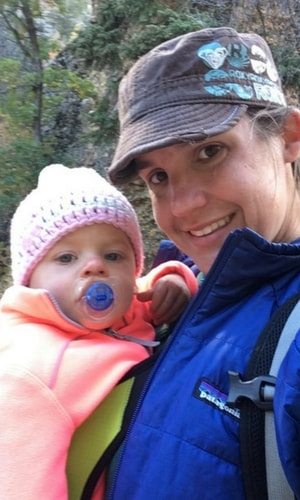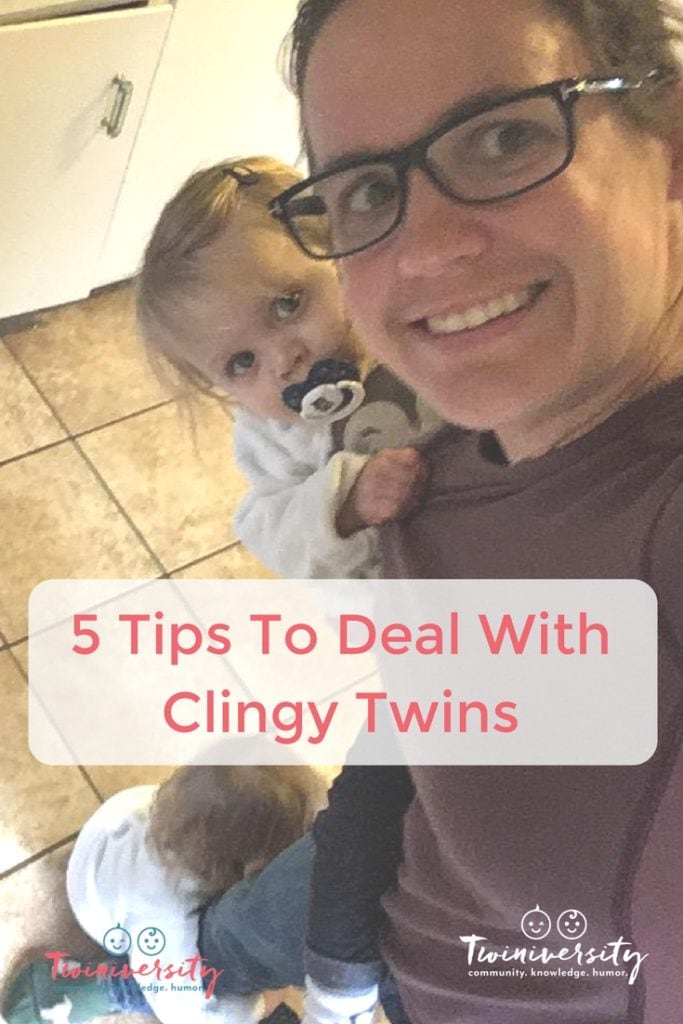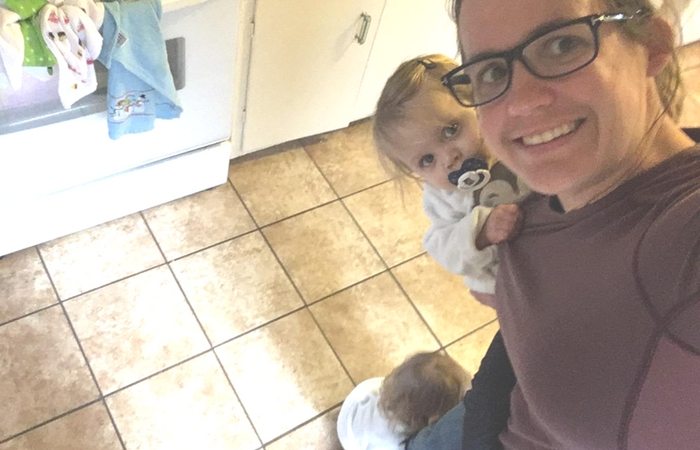Last updated on May 14th, 2024 at 04:21 pm
Are your twins in the clingy phase? Read what this twin mama says are her 5 tips to deal with and work through this phase.
The process of getting both my one-year-old twin girls ready at the same time, without having them wait in the stroller so they would become antsy felt like a daunting task as we prepared for our first story hour date. Somehow, I loaded the stroller with happy girls as our friends rolled up. Navigating the overcrowded community center and finding a place for two moms and three toddlers took some work.
Not long into the first story Z staked a claim to my lap, not really a show of force, she wouldn’t willingly share, but wouldn’t leave. M was clearly jealous and attempted to sit on my lap too, but couldn’t seem to settle in with her twin refusing to move. So, after some disappointment M decided to be resourceful, she saw that my friend’s lap was full too, but there were parents without little ones in their laps. So, my social butterfly crawled off to a gracious stranger’s lap. Stunned, I realized that I was cause for competition and that this was not a sustainable social balance.
That was when I started my research and work to help Z find more separation from me without complaint and to intentionally spend more time with M. It wasn’t always easy. I found the people that didn’t easily get offended by Z’s attachment to me were actually the people she warmed up to the quickest. I think clingy children are like cats, they need to warm up to people at their own pace.
1. I Do, We Do, You Do
As a teacher, the idea of scaffolding is important to me. We want to help set our children up for success by gradually taking away unnecessary support. For us this looked like the clingy twin on my lap as we talk and play with a new person, then moving her to sitting between us but still able to reach me, and finally limiting my interactions and moving to where I’m only in sight. Baby carriers like the Bity Bean helped me start with one really close and then gain more independence at their lead. The length of the process varied from situation to situation, but kids will generally give you clues like nuzzling you or reaching for someone else’s toy to guide you.

2. Consider That Peers May Be Easier for Your Little Ones to Connect With
Identify babysitters and older friends that allow your clingy twin to form strong relationships with. Z loves kids and teenagers, but takes more time to venture away from me with other adults. Seeing her relationship with her favorite babysitter gave me a good friendship to praise and encourage. (Added bonus, I always felt confident leaving the girls with the neighborhood babysitters that they are comfortable with.)
3. Ditch the Guilt
Remember that it may be sooner than you realize your twins will trade roles and your clingy twin will be independent. Also, there may be reasons for the differences between your children’s personality. I believe that Z’s hospitalization for RSV at 8 months created a need for my security after such a traumatic experience. After moving cross-country, M, my social butterfly, seemed to miss her old friends and needed me a little more at that point in time. Acknowledge the struggle and work together to build confidence and good experiences with other people.
4. Do Your Best to Share Your Methods
Anyone you leave your kids with should understand the importance of leaving after you say goodbye, even if your children start to cry. That’s when an established routine can help you from giving into tears. Kids see your reaction to tears as affirmation that there is a reason to cry, whereas a routine gives your child predictability that they can rely on. Use social teaching books and shows to initiate conversations on separation. “Grown-ups Come Back” on Daniel Tiger is a hit with my girls.

5. Do One-On-One Dates With Clingy Twins
Taking one twin to the store while the other stays with dad or a friend is great for so many reasons. It makes your task seem easier and faster, while also giving each twin the chance to get more focused attention and connection with you. When you have a clingy twin the majority of your “dates” should be with the other twin to practice separation and give the laid-back twin a chance to be the center of attention. This has given my family the quickest results with each new season of clingy-ness.
I have always been a fan of cuddling. I literally taught my dog to cuddle by giving her treats when she snuggled with me as a puppy. So, I assumed a cuddly baby who always wanted to be with me would be fantastic. However, in real life with twins where one was always demanding my attention and affection…well, it turns out it’s too much. Not only can it be exhausting to have a clingy little one, but it leads to guilt that you are neglecting the more easy-going twin and hurt feelings for family members rejected by the clingy twin. One of my greatest regrets is that it took me so long to get family on board with letting my girls warm up to the situation gradually, because the girls missed precious time with loved ones. Talk about your intentions to help your children with those that see them regularly and stay consistent.
During the height of our separation struggles and clingy phase my favorite daycare teacher reminded me, “If your girls have a hard time saying goodbye, it just means you’re doing something good at home”. These words help me know that the girls were not a burden at daycare when we had a few tears at drop off. Our little sponges will learn from each experience, so let’s show them how to find the positive in each situation and learn to connect with a caring community.

Some days your twins will cling to each other and you will be able to bask in the joy of teaching two little ones to love and trust others…and also teach them how to prevent hugs from turning into tackles.

Becca Heldreth is mother to 18 month old fraternal twin girls. She has a master’s degree in education and is currently able to teach from home. Her class of two toddler girls and one dog is quite an adventure. Lessons are certainly more focused on sharing and petting the dog gently than on factoring polynomials. Becca and her husband pass along their passion for the outdoors to their twins through trips to the bouldering room, hiking trails, and bike rides.







